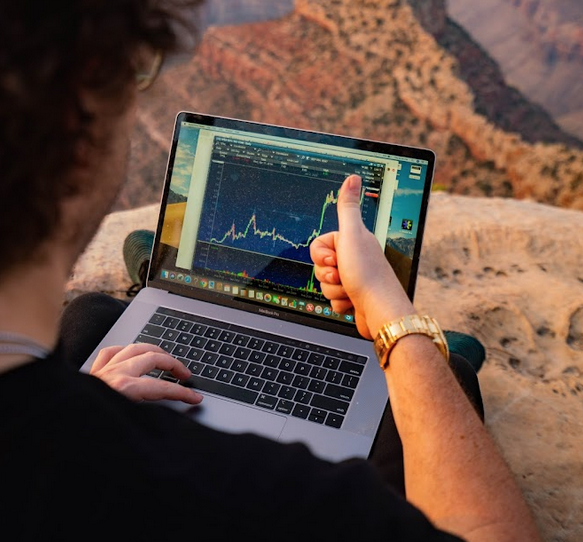I feel like a broken record…
Repeating the same advice over and over again. But it’s because I’ve seen so many traders fail.
They jump into risky trades and refuse to accept their losses, digging themselves deeper and deeper into a hole.
I almost fell victim to this destructive pattern in the first two weeks of March. But I caught myself before it was too late.
I reminded myself to stay patient, trade small, quickly cut losses, and always prioritize safety.
It wasn’t easy to stay disciplined, but it’s paying off.
When the market finally bounced back, I was in a position to capitalize on the opportunities.
And that’s exactly what I did yesterday.
I want to break down those winning trades and show you where I see the best opportunities.
My Favorite Pattern Right Now

Nothing seems to be working better than dip-buying intraday panics.
Specifically, big runners with catalysts.
If you want to learn more about the strategy…check out this video:
And this one too:
Of course, you can attend one of my live training sessions for even more info right here.
The keys to executing the strategy:
- Patience.
- Don’t be scared to miss a move if you don’t get your price.
- Make sure the ticker symbol has a promo or catalyst
- Be quick to cut losses if it doesn’t move your way
And after a slow start in March…I’ve been racking up small win after small win.

Source: Profit.ly
Why I’ve Been Playing SIVBQ

SVB Financial started trading again as an OTC stock under the ticker symbol SIVBQ.
There’s a ton of uncertainty surrounding the company and its stock price.
On the one hand, you’ve got the shorts who think the stock is a zero…and are aggressively shorting shares on pops.
On the other hand, you’ve got the quants and excel nerds who are running valuation models trying to decipher what the pieces of the company are worth.
This two sided-action, combined with fear and greed, is creating some incredible trading opportunities.
I don’t know what the company’s worth is or where the stock price should be. However, I don’t believe this will be resolved overnight. That’s why I’ve been looking for panic dip buying opportunities.
My first entry came yesterday when I saw a morning panic…
I was able to scoop up 7,500 shares at $1.20…and quickly flip them at $1.36.
I put in $9,000 on this trade and pulled out a profit of $1,172.
A few hours later, the stock started dipping again.
I was looking for a crack under $1. I figured many traders put their stops at obvious levels…and once those levels break… there are a lot of panic sellers.
I could get more aggressive on this trade since I was playing with a lead.
So I bought 25,000 shares at $0.0962…and quickly flipped them at $1.02.
I put in $24,050 on this trade and brought back a profit of $1,450.
Rinse and repeat.
One thing newbie traders do is get excited when they’re sitting on a winning trade. Greed overcomes them, and they tend to hold on too long. The position reverses on them, and their winner turns into a loser.
While I can do better to hold onto my winners, I rarely turn a winning trade into a loser. My ability to get in and out of the trade quickly allows me multiple opportunities to trade the same symbol.
I tried trading SIVBQ a third time…this time when it cracked well below $1.
I got in at $0.92. But there was no bounce this time, as the stock continued to sell off, forcing me to exit at $0.862.
Source: StocksToTrade
I ended up losing $976 on the trade…
I had no business trying this for the third time…banking stocks were weakening. And it wasn’t exactly optimal trading hours… but I felt cocky after my two earlier wins.
However, I didn’t let my frustration completely ruin my day. I recognized I wasn’t disciplined enough and put myself on a temporary time-out.
Too many traders will try to revenge-trade after a bad loss.
However, experience has taught me not to go that route.
Despite being upset about the last trade, I’m super optimistic about Q2.
We can’t control what the market gives us.
But we can control how many trades we take and how much risk we put on.
Continue to focus on what you can control.
And when the market heats up… as it has been… you can take advantage of it.
If you want to learn more about my coaching program, click here.





Leave a reply